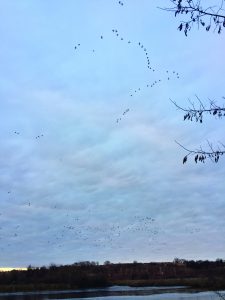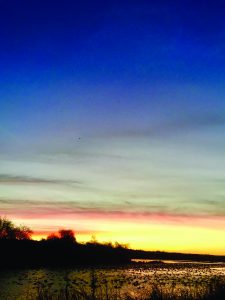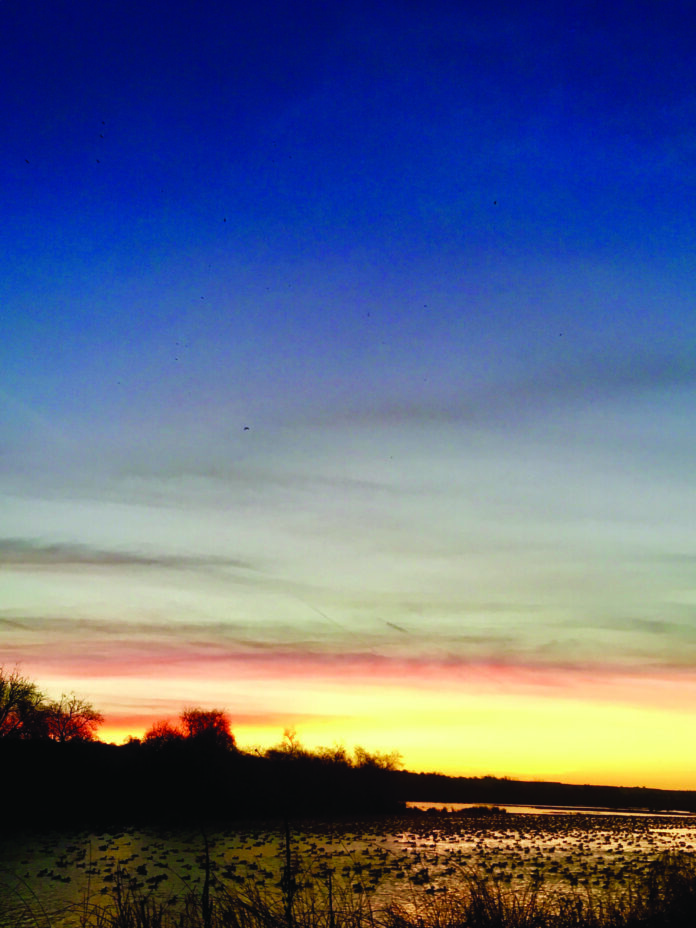BY HANNES THUM

If anybody was going to cause a car wreck last week, on a bridge crossing over one of those sloughs or side channels (or whatever one calls them) that weave themselves along the Snake River near Hagerman, it might have been me. I was driving south on Highway 30, heading upstream, when such a huge cloud of ducks rose up from the brush and water around me and began to fill the sky that I stopped my car right there on the bridge to stare.
The amount of living duck that was suddenly airborne above the highway, with more still rising up from the water, was staggering. I felt like I was in one of those biblical chapters that talk about animals so numerous that they block out the sun. I felt like I was in a scene from Jurassic Park. I felt like I had never until that moment understood how many ducks there must be on this planet.
The Snake River as it flows through south-central Idaho is a highly altered river. From the headwaters near the Tetons and Yellowstone, it is dammed and diverted into mazes of tunnels and ditches and canals. It gets drained to feed water demands (mostly agricultural), and then is re-fed with runoff, often polluted, from those same demands. No drop of water passes down the Snake, these days, without being used and abused somehow. There are healthier rivers out there.
Yet it remains the cradle for such a huge amount of life. The Snake is still, at its core, what it always has been—an enormous amount of water coursing through an otherwise dry desert. And, when you add water to a desert, you make a place less like a desert. Water leads to life.

The Magic Valley, so the story goes, got its name after the hydro-engineers and irrigation dreamers took the Snake River Plain and transformed it from an arid shrubland into one of the richest agricultural regions around by lifting the water up out of the canyon and into the fields above—the sudden explosion of green fields was like an act of magic. The true magic was simply the addition of water. Water leads to life.
The area along the banks of a stream or a river, where water is plentiful and plants grow wild, is called the riparian zone. The riparian zone can be like a lush jungle running along the banks of a waterway, even in the desert. Plants flourish there, as do the animals that feed on them. Diverse ecosystems take root. Water leads to life.
At some point, I remembered that I was parked in the middle of a highway and I moved along, surprised, yet again, by the things that can happen in the high desert of south-central Idaho. Of course, that much water should support that many ducks. As I dropped into the canyon that day and approached that bridge, I should have known better.
Hannes Thum is a Wood River Valley native and has spent most of his life exploring what our local ecosystems have to offer. He currently teaches science at Sun Valley Community School.



